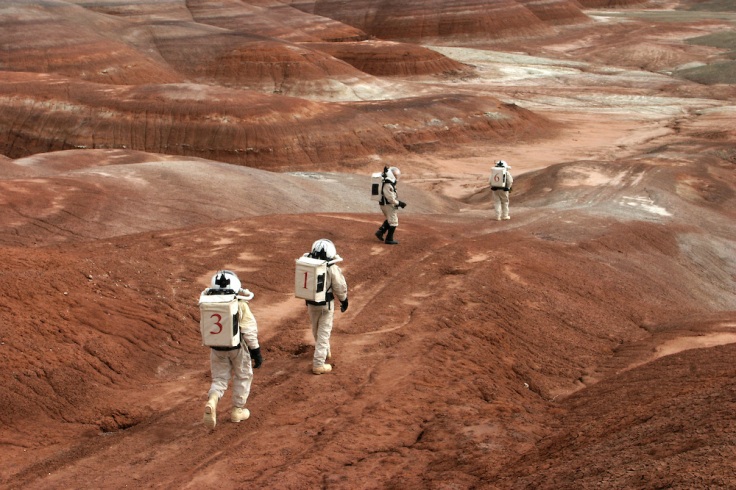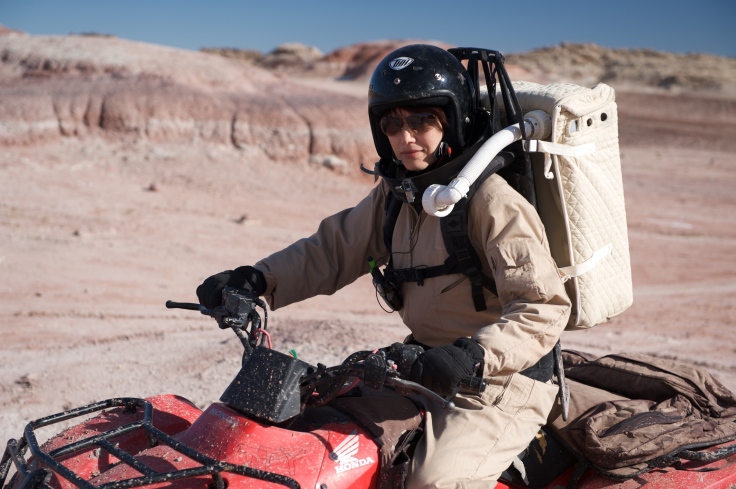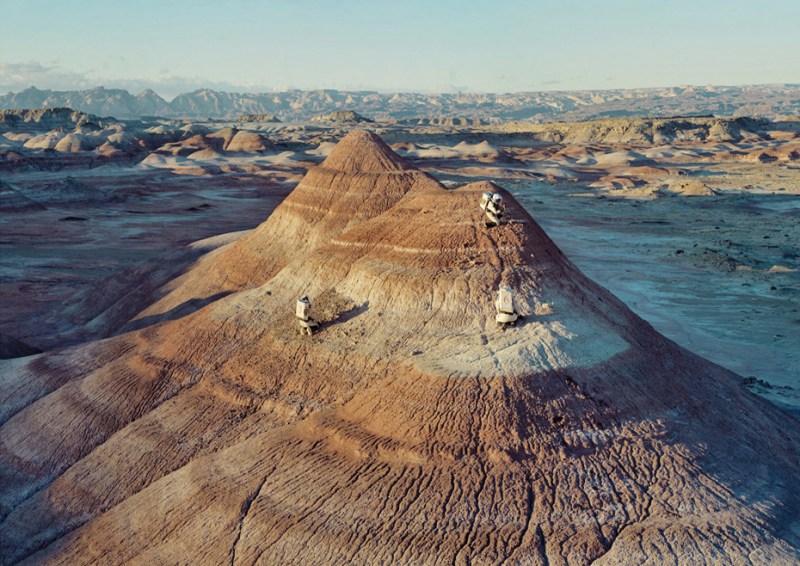Sexism in Science has been a fairly well-publicised issue in recent months, with several articles and the publication of a new BWB text Why Science is Sexist by Nicola Gaston. I have been wanting to write about our Science Curators for some time as they both have fascinating and diverse backgrounds, they’re both women with international careers, and they’re both curators primarily at Space Place at Carter Observatory. Strong evidence of why it’s important to make sure prejudice doesn’t hold girls & women back! Here are their stories in their own words:
Dr Claire Bretherton

As a child I was always fascinated by the stars, looking up to the sky and wondering what was out there. I remember going outside with Dad to see Halley’s comet in 1986. I grew up in a small village near Winchester in the south of England. We had pretty dark skies with no street lights along our road, but even so it was pretty hard to spot and didn’t quite live up to the spectacular previous visit in 1910 when Carter Observatory’s Cooke Telescope was amongst the first in the world to photograph the comet. Rather than being deterred, this just inspired me to find out more.
I was lucky at school that physics and maths came fairly naturally so when it came time to think about University I never doubted that I would take a science based subject. In the end I opted for physics with astrophysics at the University of Leicester. Whilst the physics was interesting, it soon became clear that the astrophysics was where my heart lay.
During this time my passion for Science Communication grew and I was regularly involved with science clubs. After my degree I went on to complete a Postgraduate Certificate of Education (PGCE) in Secondary Science, and this teacher training has proved immensely valuable in my career since. However, I didn’t feel that I was quite done with astrophysics, so I moved to Liverpool to take up PhD position in Extragalactic Astronomy at the Astrophysics Research Institute (ARI) at Liverpool John Moores University.
My research looks at the evolution of spiral galaxies a bit like our own as they enter into clusters, large groups of thousands of galaxies held together by gravity. What we see in the Universe today is that most of the galaxies in clusters are old, large, red elliptical and lenticular galaxies, where very few stars are being made. The galaxies we see outside these clusters are more likely to be blue spiral galaxies like the Milky Way, still in the process of forming new stars. But when we look at distant clusters, and therefore look back in time around 5 billion years, we see these spiral galaxies in the cluster environment too, so something must have been transforming these galaxies from star forming spirals to dead, ageing ellipticals over the past 5 billion years. My research looks at star formation in spiral galaxies in and around clusters in the local universe to try and understand why.
During this time I worked closely with the National Schools Observatory, which provides access for UK school children to the world’s first fully robotic research telescope. As part of this I ran regular workshops and “ask an astronomer” sessions for schools in the Merseyside area. In 2005 the ARI was a recipient of the Queen’s Anniversary Prize for its outstanding achievements in Higher and Further Education, including the development of the world’s largest fully robotic telescope – the Liverpool Telescope – and its innovative educational programmes in UK schools and colleges. I was really delighted to be asked to be part of the delegation that attended Buckingham Palace to meet the Queen and accept the award, and even more delighted to hear that she has a real interest in astronomy.

In 2007, after completing my PhD, I decided to move into science communication full time, and took up an exciting role as Astronomy Learning Officer at the Royal Observatory Greenwich. Working in such a wonderful historic setting was a really amazing experience, and the timing was perfect as I was able to be involved in the opening of the brand new modern astronomy galleries and the new state-of-the-art planetarium, where I met the Queen for a second time!
Producing new content for the planetarium environment became a key part of my role, combining my love of science, my passion for communication and the chance to use my creativity in an amazingly versatile , high tech environment. While I produced many shows during my time at Greenwich, my favourite was Space Safari – a 20 minute exploration of the Solar System designed for pre-schoolers. The Royal Observatory was a fantastic place to work and London is an amazing, vibrant and diverse city to live in, but the view of the stars and the 2 hour commute each way wasn’t quite so spectacular!

So I moved to New Zealand in 2010 for a better lifestyle, a new challenge and a clearer view of the stars, and to take up the role of Learning and Programmes Manager at Carter Observatory. It was a bit of a leap of faith – I had never even visited the southern hemisphere before, and New Zealand is about as far away from home as you can get.
Although I grew up in England, I come from a close Welsh family who are mad about our national sport, so I was delighted to arrive in New Zealand in time for the Rugby World Cup 2011. In fact, some of my friends and family thought the world cup was the only reason I moved to NZ.
In 2014 I began a new role as Curator of Science across Museums Wellington, which has meant working on a whole host of exciting projects, but I am particularly delighted to be able to spend some of my time back in the planetarium producing new content, including my second preschool planetarium show Te Whānau o te Rā/ The Family of the Sun.
I love life in Wellington and I am passionate about inspiring Wellingtonians and all New Zealanders to take an interest in science and to look up at our wonderful southern skies.
Haritina Mogosanu

Stars fascinated me ever since I can remember. Most of our great stories are linked to them in one way or another, and life too. That’s what inspires me to be both a ‘starry-teller’ and an astrobiologist. I use both curiosity and my technical expertise from biological sciences to support science education and the dream of space exploration. I have faith that telling our success stories can make a difference for others. And I want the human race to survive beyond the 4.5 billion years left with our Sun, to become a space-faring civilisation.
My most amazing life experience was being pregnant with my gorgeous daughter and having the chance to research life in the Universe while life was taking shape inside of me! To be the guardian of life is for me the most precious mission that anyone can aspire to.

I am an astrobiologist (life sciences) and a science communicator. Besides biological sciences, I trained in public relations, international security and outreach. I love to travel and share my passion for astronomy, astrobiology and space. I also believe that scientific education is a gatekeeper of peace. It makes humankind better for all of us.
I started my outreach career in 2003, writing about astrobiology in the UNESCO-funded magazine “Science and Technology”. I then developed a pilot project for building telescopes for schools in Romania with UNESCO Romania and the Bucharest Astroclub. In 2005 I decided to travel to the Southern Hemisphere to see the stars and learn about celestial navigation. In New Zealand I managed the Visitor Experience Department of the Carter Observatory, delivering planetarium presentations and public telescope sessions.
I also produce ‘Milky Way Kiwi’, New Zealand’s first astrophotography magazine. One of my dearest projects was creating the concept of an annual Polynesian Celestial Navigation Festival, MataOra, for which I had UNESCO support. I was very proud of being awarded the ‘International Year of Astronomy Certificate of Appreciation’ for Astronomy Outreach efforts, recognising the success of the International Year of Astronomy 2009 in New Zealand.

My life has changed unexpectedly in January 2011, when I was invited by the Romanian Space Agency (ROSA) to be the Executive Officer, Astronomer, Engineer and Biosecurity Officer of Crew 98 Romars, stationed at the Mars Desert Research Station (MDRS) in Utah USA. I returned to MDRS in 2012 as Commander of (the first trans-Tasman) Crew 118, KiwiMars. Then I took the Mars experience to many schools as Futureintech Ambassador.
As instigator of the first World Space Week Association’s outreach event, I then went back to the Mars Desert Research Station in October 2013. There I was part of the WSW MDRS crew in the biggest World Space Week event yet, ‘Explore Mars, Discover Earth’. I returned from Mars on Earth to speak at TEDx Christchurch. In 2015 I was invited to fly on the SOFIA Space Telescope while SOFIA was in New Zealand for its second deployment, and that was the pinnacle of my professional experience with the stars.

These are not the only organisations and events a busy astrobiologist is asked to contribute to! Stars are my inspiration.
I used to be very scared of the dark. But I never felt small, insignificant and vulnerable when I saw the vastness of the Universe. I never felt lost amongst a myriad of stars! I have always been basking in starlight. And I’ve always been curious to know why it feels so good. I believe that by looking at the stars we can find out who we were, who we are and most importantly who we will become.
I also believe that culture is merely a set of instructions handed down from our ancestors for generations, to ensure our best survival. I would wish for people to understand that progress comes from sharing knowledge, and that extinction is forever! More than anything, I wish people could comprehend that we are made of stardust. Thus, in life everything is possible. An old newspaper clipping from the Dominion Post has been an inspiration to me all these years. It says: “destiny is not a matter of chance, it is a matter of choice. It is not a thing to be waited for, it is a thing to be achieved.”


Leave a comment